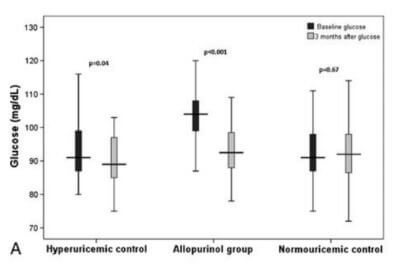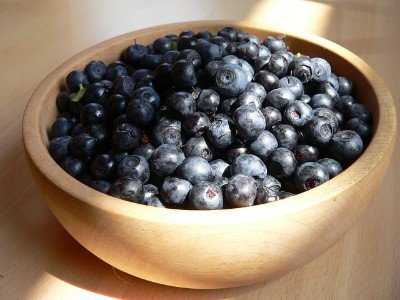Forum Replies Created
-
AuthorPosts
-
 Keith TaylorParticipant
Keith TaylorParticipant
I can only comment competently on (2) as my febuxostat experience is limited to what I’ve written on GoutPal.com and these questions seem to go well beyond that.
The purine source (animal or plant) debate is interesting yet complex and largely misses the point.
Scientists have shown that different types of purines are digested differently. But most of the research is aimed at understanding purine metabolism. So very little useful purine research on gout sufferers is available. More importantly, I cannot recall anything like the type of investigation that is done when clinical research compares treatment options. Because the only research that matters is where gout sufferers are in controlled environments. Then we can compare different meal groups. But importantly, we must measure the purine type as well as its animal or plant origins. Also, we must account for temporary animal purine inputs from weight loss in the humans being studied.
With that level of research, we could gain more insight than current research. Which basically tells us that diets based on plant purines are more gout-friendly than diets based on animal purines.
But the real point is that we also need to consider non-purine issues that are related to this. Not least is Kanbara’s findings that alkalizing foods (mainly plants) are better than acidifying foods (mainly animals) at pissing away the purines.
In short, you need to consider what goes out as well as what goes in.
Finally, to bring this back to the topic title, I have a question I should have asked before I wrote the above. Why on earth does this matter when febuxostat effectively makes all food purine-free?
 Keith TaylorParticipant
Keith TaylorParticipantEven though the uric acid is down, is the joint still packed with crystals?
Unfortunately, yes.If so, when the hell will they be on their way?
It depends on how long you had excess uric acid for and how high the excess was. Also, it depends on how low you get uric acid now.So, you can only influence the third aspect. So my default setting is to increase allopurinol to the maximum dose allowed by your doctor. But it is absolutely essential to monitor kidney function and liver function during this process. Because increasing your allopurinol dose without those vital tests is like jumping out of the window without checking which floor you’re on.
Finally, I’d comment that from years of discussing this I get a feeling that it takes around one month to recover from gout for every year that you had it. As long as you get uric acid below 6mg/dL. So, John, your uric acid test results are well below the average gout patient and you might manage one month for every 18-24 months that you’ve had gout. But if you want to recover quicker from gout, go lower with uric acid.
Finally, going back to the title of your topic “gout pain relief” you will need to consider your pain relief options until most old uric acid crystals have resolved. So, first consider if you want preventative or as required gout pain treatment. Then we can come up with some options that you can discuss with your doctor.
 Keith TaylorParticipant
Keith TaylorParticipantUnfortunately, because it’s only a preliminary lab report, we cannot yet know the best composition. So, I will fall back on my old favorite – Potential Renal Acid Load (PRAL).
Note that this is calculated from protein, phosphorous, potassium, magnesium, and calcium. So, it’s quite easy to generate a spreadsheet for the PRAL score. Or, it is for me, if you find the basic data 🙂
Importantly, this has absolutely nothing to do with the physical pH of water. Because we are interested in finding how each water affects the pH of urine. Which we know can influence uric acid excretion rates and blood uric acid levels. Actually, I can see I need to do better cross-referencing to Kanbara’s research that proves this. But the information is there starting in the Alkaline Diet section of Mediterranean, DASH, or Alkaline Diet for Gout.
Unfortunately, current research is not gout-specific enough when it comes to individual food and drink items such natural soda water/mineral water. Because it could well be the case that bicarbonate content might differentiate water recommendations for gout. But I can only go on the current state of research. So I opt for PRAL scoring. More importantly, urine pH monitoring.
That’s got me thinking that gouties could do their own research. To do it you would have to:
1. Get baseline blood uric acid and 24-hour urine tests.
2. Drink only one type of water for 2-4 weeks.
3. Repeat blood and urine tests.
4. Continue looping 2. and 3. with different water brands.
5. Analyze the stats for correlation between water nutrients, blood uric acid, and uric acid excretion rates.It’d probably not going to happen. Though I’ve been pleasantly surprised by members personal research in the past. However, d_q, if you want to post some nutrient data I would be happy, nay ecstatic, to turn that into a PRAL chart. 😀
Gout and Club Soda Topic Summary
This topic covers many different types of water. So it might be better if you start a new discussion about the type of water you are most interested in. In the meantime, here is a repeat of the summary I added to the beginning of this topic:Subject Facts Discussion Summary Soda Water and Gout Best Home Remedies For Gout: Water Gout and Soda Tonic Water and Gout No specific facts page so search for tonic water Gout and Tonic Water Carbonated Water and Gout Water as a Home Remedy for Gout Can drinking club soda help my gout? Sparkling Water and Gout Water as a Home Remedy for Gout Gout and Sparkling Water  Keith TaylorParticipant
Keith TaylorParticipantHi Deb, I’m sorry to hear that you are suffering from horrendous gout pain and I hope I can help you.
Firstly, you must understand – gout pain is a different experience for each gout sufferer. So you need to develop your own gout pain management strategy. Then we can work out ways to control your gout pain until you can get full gout recovery. But full gout recovery can take several weeks/months/years depending on how bad your gout is and how long you had it.
The good news is, we can help you control your gout pain very effectively. But the bad news is, you’ve given me absolutely no information to help you. Because to help you properly, I need to know:
– More about the timing of your first gout attack.
– What your doctor said. Especially, did your doctor escalate from naproxen to the prednisone? Or were you just taking naproxen over the counter? Most importantly, what did your doctor say about any follow-up?
– Much more about you personally, if you want help long-term beating this for good.So, with so little info, all I can suggest is seeing your doctor as soon as you can. But also, you can browse and search to find more information. Perhaps you could start at How Do I Stop Gout Pain?
 Keith TaylorParticipant
Keith TaylorParticipantNatural Soda Water Prevents Gout
I’ve added a subsection to my main page about gout and water. Because recent research suggests that natural soda water can prevent gout. But note this is a preliminary lab report. So it’s a long way from being a confirmed uric acid treatment that has been tried and tested on human gout sufferers.
 Keith TaylorParticipant
Keith TaylorParticipantHi Kelly,
Besides suing your rheumatologist, I recommend my recent Stages of Gout Recovery: Your 6 Step Plan. Your GP should be able to prescribe allopurinol as I described in that article. But if you want to consider alternatives to allopurinol, we can discuss that first.
As far a positive AntiNuclear Antibodies is concerned, the American College of Rheumatology advise that a single positive test result is no cause for concern. #However, you should ask your GP about getting retested.
 Keith TaylorParticipant
Keith TaylorParticipantI entirely agree. Because I got quite excited when I first read the report. Especially when I considered this is not a real gout trial. So safe dosing might be high enough for many sufferers. Too early to say.
I didn’t study pricing because if it becomes accepted then it will be same price as everything else in the UK. But for the important people in the USA I should do more research. I’m thinking that a good quality product using the best ingredients should not be too expensive at commercial quantity.
 Keith TaylorParticipant
Keith TaylorParticipantI’ve been researching milk thistle, which is one of the ingredients in Uriciplex. Because there has been a very interesting breakthrough in how an additional herbal extract can work in combination to reduce uric acid.
But first, let me have a rant about the milk thistle supplement market. Because it seems to be populated entirely by dodgy claims, exploitative marketing tactics, and poor research. So I’m reminded of a post in the old forum (How weak is Uricinex). Because it was a seemingly credible tale of gout woe. But in the middle of it, the poster added a claim that his doctor put him on Uricinex! Anyway, such behavior is best forgotten. But why do these products attract such weird behavior?
OK rant over. The real point of this update is to draw attention to some very interesting gout research proving that milk thistle when added to berberine, creates a potent herbal uric acid treatment. So read Berberine and Milk Thistle for Gout and share your thoughts here.
 Keith TaylorParticipant
Keith TaylorParticipant
How do you stop the agony of your gout?
Hey paulalmeida, thanks for the details of what keeps your gout pain at bay. I also hope it helps other gout sufferers.
But what about uric acid? Are you getting the regular annual checks that every gout sufferer needs? Because we all need to monitor uric acid, kidney function and liver function at least once a year. Also, more frequently during uric acid treatment.
 Keith TaylorParticipant
Keith TaylorParticipantHi Nancy,
My first thought is “What does your doctor say?”. Followed by, “have you forgotten something else that has changed?” and “why not post actual results with dates?”
Also, you suggest that you are making diet changes. But is that structured in a healthy eating plan? Or random changes to see what happens?
Anyway, I’m intrigued. Because allopurinol is associated with lower blood glucose. So you’ve left me with more questions than answers.
Allopurinol and Diabetes
Takir, Mumtaz, Osman Kostek, Abdullah Ozkok, Omer Celal Elcioglu, Ali Bakan, Aybala Erek, Hasan Huseyin Mutlu et al. “Lowering uric acid with allopurinol improves insulin resistance and systemic inflammation in asymptomatic hyperuricemia.” Journal of Investigative Medicine 63, no. 8 (2015): 924-929.Treatment with allopurinol led to a significant decrease in serum uric acid and was well tolerated without significant side effects. The striking finding was a robust improvement in fasting glucose […] In conclusion, allopurinol treatment of subjects with asymptomatic hyperuricemia resulted in a marked improvement in insulin resistance and systemic inflammation. Larger clinical trials are indicated to determine if lowering uric acid can help prevent type 2 diabetes.

Has allopurinol helped your diabetes?
 Keith TaylorParticipant
Keith TaylorParticipantYou’ve opened up a can of worms here @d_q
Because I started to look for good food sources for antioxidants (below). Then I noticed flaxseed, onion, and cherries on the list which have all shown benefits for gout sufferers. So I thought I should look at blueberries for gout. But I’m perplexed to the point of suspecting a conspiracy.
My only significant find so far is a clinical trial NCT01532622, “Impact of Blueberries on Uric Acid and Quality of Life”. But this completed in October 2013 and I can’t find any results or references to results. Which leaves me wondering if blueberries can help lower uric acid. So why do I suspect a conspiracy?
Because the research is sponsored by U.S. Highbush Blueberry Council! So maybe they didn’t get the results they were looking for? 😮

Do Blueberries help your Uric Acid?
Antioxidant Activity and Total Phenolics of Methanolic Extracts of Plant Products
From Velioglu, Y. S., G. Mazza, L. Gao, and B. D. Oomah. “Antioxidant activity and total phenolics in selected fruits, vegetables, and grain products.” Journal of agricultural and food chemistry 46, no. 10 (1998): 4113-4117.Name – Antioxidant Activity – Total Phenolics
solin gum – 82.1 – 1422
flaxgum 1 – 78.6 – 1354
solin seed – 61.6 – 473
flaxseed – 60.6 – 509
flaxgum 2 – 58.5 – 328
flaxgum 4 – 58.3 – 338
flaxgum 3 – 53.7 – 377
blueberry – 92.1 – 4180
red onion scale – 90.2 – 10548
sunflower hull, purple – 88.9 – 9747
sweet cherry – 82.5 – 2098
potato, purple – 60.8 – 781
horseradish oil – 99.1 – not detected
sea buckthorn – 93.6 – 1112
echinacea flower heads – 81.5 – 5467
echinacea root – 77.7 – 3841
ginseng root – 69.1 – 347
horseradish root – 57.4 – 481
buckwheat hulls – 94.9 – 3900
potatoes (R. Burbank) – 80.0 – 437
sunflower seed – 72.9 – 1601
wheat germ – 64.9 – 349
buckwheat seed – 63.7 – 726
fibrotein MK11-DDG – 82.3 – 1241
fibrotein MK43 – 63.4 – 169
fibrotein MK37 – 56.0 – 213 Keith TaylorParticipant
Keith TaylorParticipantHowever, I’ve just read an alternative view:
Increased fruit and vegetable consumption is associated with a decreased incidence of cardiovascular diseases, cancer, and other chronic diseases. The beneficial health effects of fruits and vegetables have been attributed, in part, to antioxidant flavonoids present in these foods. Large, transient increases in the total antioxidant capacity of plasma have often been observed after the consumption of flavonoid-rich foods by humans. These observations led to the hypothesis that dietary flavonoids play a significant role as antioxidants in vivo, thereby reducing chronic disease risk. This notion, however, has been challenged recently by studies on the bioavailability of flavonoids, which indicate that they reach only very low concentrations in human plasma after the consumption of flavonoid-rich foods. In addition, most flavonoids are extensively metabolized in vivo, which can affect their antioxidant capacity. Furthermore, fruits and vegetables contain many macro- and micronutrients, in addition to flavonoids, that may directly or through their metabolism affect the total antioxidant capacity of plasma. In this article, we critically review the published research in this field with the goal to assess the contribution of dietary flavonoids to the total antioxidant capacity of plasma in humans. We conclude that the large increase in plasma total antioxidant capacity observed after the consumption of flavonoid-rich foods is not caused by the flavonoids themselves, but is likely the consequence of increased uric acid levels.
Which is the abstract from:
Lotito, Silvina B., and Balz Frei. “Consumption of flavonoid-rich foods and increased plasma antioxidant capacity in humans: cause, consequence, or epiphenomenon?.” Free Radical Biology and Medicine 41, no. 12 (2006): 1727-1746.Unfortunately, there are over 700 follow-ups to that report, with some contradictions at first sight. So, my earlier view might be a simplification.
Ultimately I still feel that my approach is sound. Because I believe that we should adopt a healthy diet. Then adjust for problems with uric acid, blood pressure, cholesterol, etc if that healthy foundation does not achieve the right results. So that adjustment might be more dietary adjustments, herbal supplements, or medical interventions. But, the main problem still remains: can we truly determine what is a healthy diet?
Anyway, a friend often accuses me of overthinking and I believe I’m doing this now. Because you have a hypothesis, @d_q that your uric acid and hemoglobin levels are linked. So, I suggest the first step is to analyze the data and see if that is true. Then we can think about possible causes and effects and potential solutions.
 Keith TaylorParticipant
Keith TaylorParticipantTotally bewildered.
Time of day?
Number of minutes since last meal?
Or just a “blip” in the test procedure? Sub-prime results seem to be quite common in all medical literature that I’ve read. So that is why I advise self-testers to ignore highs and lows and focus on moving average. But for professional lab tests, most doctors respond with “come back in two weeks for another test”any ideas or research articles that suggest that UA may play a vital role in protecting cells from oxidants / free radicals?
Which of the results of a search for antioxidant uric acid would you like me to expand on? It aint a suggestion, it’s a medical fact. Uric acid is a powerful antioxidant. So, if we have a shit diet low in natural antioxidants, our body has to produce more antioxidants to balance that. As far as I’m aware, the only antioxidant we can manufacture is uric acid. (I don’t mind being corrected if I’m wrong on that)
As my mum (91 today) always says “look after your phenolics and your urates will look after themselves”
 Keith TaylorParticipant
Keith TaylorParticipantActually, I did get a week in the Algarve last month. Because it’s nice to enjoy some warm sunshine during January, though the nights were very cold. Unfortunately, there is now a national shortage of Port Wine in Portugal! 🙂
But the main reason is that my time has been limited of late with both personal and professional commitments. So I had to focus more on GoutPal.com, as it helps many more people. However, I have tried to monitor posts from the update service and step in if I can see a need.
Regular readers of that service will know that it only presents the first few lines. So anyone who wants to grab my attention should start their new topic or reply with something interesting!
Subscribe to Free GoutPal Links
Subscription is free, and your email address is safe. Because I will never share it with anyone else. I use Gumroad to provide this service, as described at GoutPal Links Newsletter Service.
Anyway, I’ve updated Review Is Allopurinol A Lifetime Drug to reflect some more recent research in this area. But, there is no real consensus, and all research has been on allopurinol, not febuxostat.
Personally, I think it’s a matter of common sense. So the dirty dish analogy is useful there. Then it’s a matter of remembering the key points:
1. You need to be sure that the dish is clean! That is, your uric acid should have been well below 6mg/dL for 5 years without any gout symptoms. Also, you should have no visible signs of tophi.
2. You need to carefully check for dust! That is, you need to monitor and record your uric acid levels during the withdrawal period. Then take professional advice using the research I’ve mentioned, to take a view on when to restart uric acid treatment.<hr />
 Keith TaylorParticipant
Keith TaylorParticipantFollowing another question about this topic today, I have looked for more recent research. Although there are some interesting studies, there are still no definitive guidelines about the temporary withdrawal of uric acid treatment. So, it seems it is still a matter for individual decision making between you and your rheumatologist or other doctors.
In 2011, Perez-Ruiz built on the 2006 report I used to create Is Allopurinol A Lifetime Drug. Because he published:
Perez‐Ruiz, Fernando, Ana Maria Herrero‐Beites, and Loreto Carmona. “A two‐stage approach to the treatment of hyperuricemia in gout: The “dirty dish” hypothesis.” Arthritis & Rheumatology 63, no. 12 (2011): 4002-4006. 2-stage Uric Acid Treatment (Dirty Dish) PDF.The unusual “Dirty Dish” term is explained:
A figurative analogy to a dirty dish may help in visualizing the issue: the initial effort to clean the dish (serum urate therapeutic target) would depend on how dirty it is (urate deposition burden) and, once it is clean, light daily wiping may be enough (serum urate preventive target) from then on to avoid dust (new urate crystal) accumulation and keep it clean (no recurrence).
Last year, Beslon and colleagues reviewed all similar uric acid studies:
Beslon, Virginie, Perrine Moreau, Annabel Maruani, Hubert Maisonneuve, Bruno Giraudeau, and Jean-Pascal Fournier. “Effects of discontinuation of urate-lowering therapy: a systematic review.” Journal of general internal medicine (2017): 1-9. Relapse Rates after Stopping Uric Acid Treatment PDF.So I used that report for the image you see above. But they conclude:
Relapse of gout is common although delayed after discontinuation of ULT. Short-term prognosis after ULT discontinuation appears favorable if the serum urate level was low before ULT discontinuation. The results of this review are limited by the paucity of existing studies and their low quality. Further comparative studies should consider larger primary care populations and discontinuation of febuxostat.
As I noted earlier, if this topic interests you, please encourage me to update the relevant resources on GoutPal.com by adding your comments below.
 Keith TaylorParticipant
Keith TaylorParticipantWow! My 3 pet peeves in one post. 🙁
1. Podiatarist
Now, I’m sure there are some good ones. But I mainly see the bad. Because most do not understand uric acid control. Also, the worst podiatrists allow tophi to grow. Then butcher the bunion and post meaningless unhelpful videos on YouTube.OK, I’m squeamish and hate seeing operations. But I hate needless suffering even more.
2. Normal Uric Acid
There is nothing exceptional about normal uric acid. Yet it makes my blood boil. Because Normal is a statistical term that roughly translates to everyday language as average. You have average uric acid levels. So that’s OK.No, it isn’t OK!
Average people get gout. I do not want you to be average. Because I want you to be safe.
3. Unnecessary Home Uric Acid Testing
Here’s a little GoutPal story.When GoutPal was young, he loved to tinker with cars. So, as soon as he got his first car, he learned to strip it and fix it. Then, he got adventurous and bought an automotive multimeter after reading something in one of the many magazines he half-understood.
But, the multimeter readings only confused him. Until a real mechanic pointed out that all he need do was ask for a battery check when refueling. So GoutPal learned a lesson about leaving some complicated things to experts.
Except he didn’t learn.
Because years later, GoutPal started a website to learn about his gout. He didn’t understand normal=average. Also, he didn’t understand many other important things about gout. But he still wasted several days of his life learning how to use a home uric acid tester.
So now, before you buy a uric acid test kit, I advise:
Convince yourself that you can learn and apply consistent strategies for using the meter in the exact manner described in its instructions.
Uric acid test meters are not toys. These instruments need a consistent, adequate blood sample of the correct size which may take practice to achieve.
Perhaps I should start a course to help gout sufferers “learn and apply consistent strategies for using the meter“. $200 for the course. Then at the end, you get to choose between a free home test kit or equivalent value in professional blood tests. Any takers?
Also, perhaps I should amend my test kit page to make the buying choice easier to understand?
 Keith TaylorParticipant
Keith TaylorParticipant -
AuthorPosts

